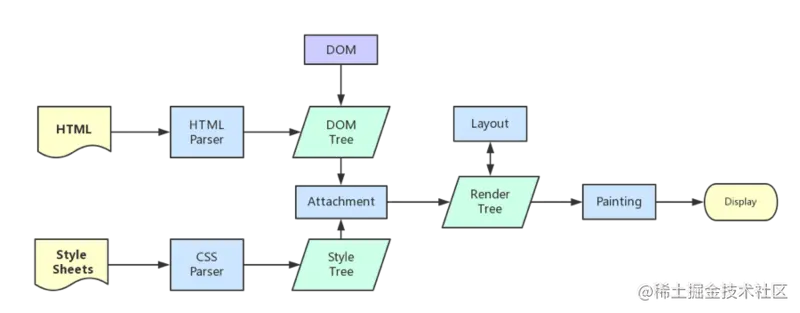概述:
这是一道频率出现比较高的面试题,像阿里、腾讯、京东的Java初中级工程师面试题都出现过、面试过了薪水也能拿个10K~20K,所以掌握这些基础的知识还是有必要的。
1、继承Thread类,重写run方法
启动线程使用的是start方法,这样会启动一个新的线程,并执行线程的任务。如果直接调用run方法,则可以执行run方法中的逻辑代码。
public class ThreadDemo {
public static void main(String[] args) {
MyJob job = new MyJob();
job.start();
}
static class MyJob extends Thread{
@Override
public void run() {
for (int i = 0; i < 20; i++) {
System.out.println("数字:" + i);
}
}
}
}
2、实现Runnable接口,重写run方法
此方法比继承Thread要灵活,因为类只能继承一个父类,而可以实现多个接口
public class RunnabeDemo {
public static void main(String[] args) {
new Thread(new MyRunnable()).start();
}
static class MyRunnable implements Runnable{
@Override
public void run() {
for (int i = 0; i < 10; i++) {
System.out.println("runnale:" + i);
}
}
}
}
3、实现Callabe,重写call方法,然后与FutureTask一起使用
callable一般用于有返回值非阻塞的方法中
public class CallableDemo {
public static void main(String[] args) throws ExecutionException, InterruptedException {
MyCallable callable = new MyCallable();
FutureTask<String> task = new FutureTask(callable);
Thread thread = new Thread(task);
thread.start();
Object o = task.get();
System.out.println(o);
}
static class MyCallable implements Callable<String>{
@Override
public String call() throws Exception {
int count = 0;
for (int i = 0; i < 10; i++) {
System.out.println("MyCallable== " + i);
count += i;
}
return count + "";
}
}
}
4、使用ExecutorService、Callable、Future实现有返回结果的线程:
ExecutorService、Callable、Future三个接口实际上都是属于Executor框架。返回结果的线程是在JDK1.5中引入的新特征,有了这种特征就不需要再为了得到返回值而大费周折了。而且自己实现了也可能漏洞百出。
可返回值的任务必须实现Callable接口。类似的,无返回值的任务必须实现Runnable接口。
执行Callable任务后,可以获取一个Future的对象,在该对象上调用get就可以获取到Callable任务返回的Object了。
注意:get方法是阻塞的,即:线程无返回结果,get方法会一直等待。
再结合线程池接口ExecutorService就可以实现传说中有返回结果的多线程了。文章来源:https://www.toymoban.com/news/detail-426425.html
public class ThreadPoolDemo {
@Autowired
private ThreadPoolExecutor threadPoolExecutor;
public void execute() throws InterruptedException, ExecutionException {
CountDownLatch countDownLatch = new CountDownLatch(5);
Future future = threadPoolExecutor.submit(() -> {
System.out.println("hello");
});
Object o = future.get();
countDownLatch.await();
}
@Slf4j
public class QuartzRunnable implements Callable {
private Object target;
private Method method;
private String params;
@Override
public Object call() throws Exception {
ReflectionUtils.makeAccessible(method);
if (StringUtils.isNotBlank(params)) {
method.invoke(target, params);
} else {
method.invoke(target);
}
return null;
}
}
}
@Configuration
@EnableAsync
class ThreadPool {
@Value("${threadPool.core-pool-size}")
private int corePoolSize;
@Value("${threadPool.max-pool-size}")
private int maxPoolSize;
@Value("${threadPool.keep-alive-time}")
private int keepAliveTime;
public ThreadPoolExecutor getExecutor() {
ThreadPoolExecutor executor = new ThreadPoolExecutor(
corePoolSize,
maxPoolSize,
keepAliveTime,
TimeUnit.MICROSECONDS,
new ArrayBlockingQueue<>(300)
);
return executor;
}
}
5、总结
上面四种方法,本质上都是实现了Runnable的方法文章来源地址https://www.toymoban.com/news/detail-426425.html
到了这里,关于面试题2023:Java线程的实现方式的文章就介绍完了。如果您还想了解更多内容,请在右上角搜索TOY模板网以前的文章或继续浏览下面的相关文章,希望大家以后多多支持TOY模板网!



![java八股文面试[多线程]——Synchronized的底层实现原理](https://imgs.yssmx.com/Uploads/2024/02/682990-1.png)






